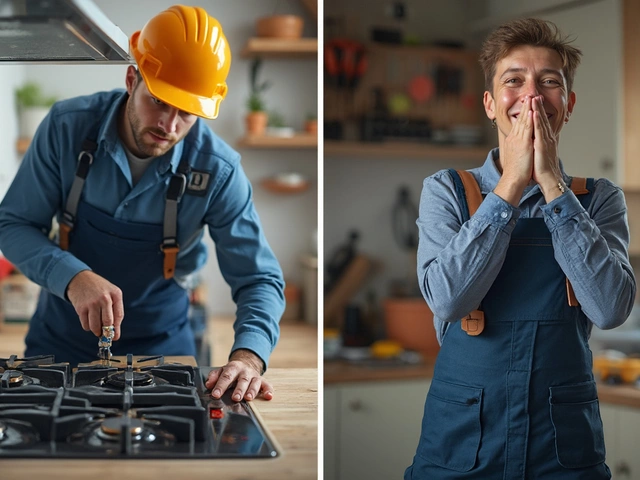Is It Worth Repairing a Cooker? Uncovering the Real Deal
April 4 2025Heat Pump Troubleshooting
If your heat pump stops heating, makes strange noises, or just feels less efficient, you’re probably wondering what’s wrong. The good news is many issues can be spotted and even fixed before you need a callout. Below are the most common problems, easy tests you can do yourself, and clear signs that professional help is required.
Common Signs Your Heat Pump Needs Attention
First, notice how the unit behaves. If the indoor fan runs but the heat doesn’t get out, the refrigerant might be low or the thermostat could be mis‑set. A sudden drop in water temperature, especially after the first few weeks of a new season, often means the heat exchanger is dirty or the filter needs cleaning.
Loud banging, rattling, or high‑pitch squealing usually points to a loose motor belt or a failing compressor. Even a faint, constant humming can indicate an electrical fault – a blown fuse, a tripped breaker, or a bad contact.
Another red flag is a spike in your energy bills. When a heat pump works harder than normal, it draws more power. If you see a 20‑30% increase with no change in usage, run a quick efficiency test: measure the temperature rise across the indoor coil and compare it to the manufacturer’s spec. A lower than expected rise means the system is struggling.
DIY Checks Before Calling a Pro
Before you pick up the phone, try these simple steps. Turn off the power at the breaker, then remove the front panel and clean any dust or debris from the fan and coils. A dirty coil can reduce heat transfer by up to 30%. Use a soft brush or vacuum on low power – never spray water directly on the unit.
Next, check the thermostat settings. Make sure it’s set to “heat” and the temperature is at least a few degrees above the current room temp. Some models have an outdoor reset button; press it if the unit won’t start.
If your heat pump has a visible refrigerant line, look for signs of frost or ice. A thin layer of frost is normal, but heavy ice buildup suggests a low‑charge issue or a stuck valve. Turn the system off, let it thaw, and then run it again. If the problem returns, it’s time for a professional to check the charge.
Finally, listen for error codes. Many modern heat pumps flash a series of lights or display a code on the control panel. Write down the pattern and look it up in the manual – you’ll often find a quick fix, like resetting a sensor.
If any of these checks don’t solve the problem, or if you spot a blown fuse, a burnt smell, or water leaking from the unit, stop the DIY approach. Faulty electrical components or refrigerant leaks require certified gas engineers. They have the tools to safely recharge the system, replace a bad compressor, or fix wiring issues.
At Bedford Gas Appliance Repair Services we specialize in heat pump maintenance and emergency repairs. Our certified engineers can diagnose the issue fast, offer clear cost advice, and get your home warm again without unnecessary replacement.
Remember, regular servicing – at least once a year – catches many of these problems early. A quick filter change, coil clean, and system check can add years to the life of your heat pump and keep your bills low.
Got a specific symptom you can’t figure out? Browse our related posts: “How to Tell If Your Heat Pump Needs Replacing (Signs, Costs, Repair vs Replace)” and “Heat Pump Troubleshooting Basics.” They dive deeper into each issue and give you step‑by‑step guidance.
Keeping your heat pump running smooth isn’t rocket science, but it does need some attention. Follow the checks above, schedule routine maintenance, and you’ll enjoy reliable heat without surprise breakdowns.
 29 May
29 May
Heat Pump Running But Not Cooling? Real Reasons and Fixes
Wondering why your heat pump keeps running but your home isn’t cooling down? This article digs into the most common reasons behind this issue, from simple fixes you can do yourself to bigger problems that might need a pro. Spot signs of trouble before they become expensive repairs. Check out helpful tips on maintenance and efficient operation. Stop sweating—get straightforward answers on what to check and what to do next.
Read More...



